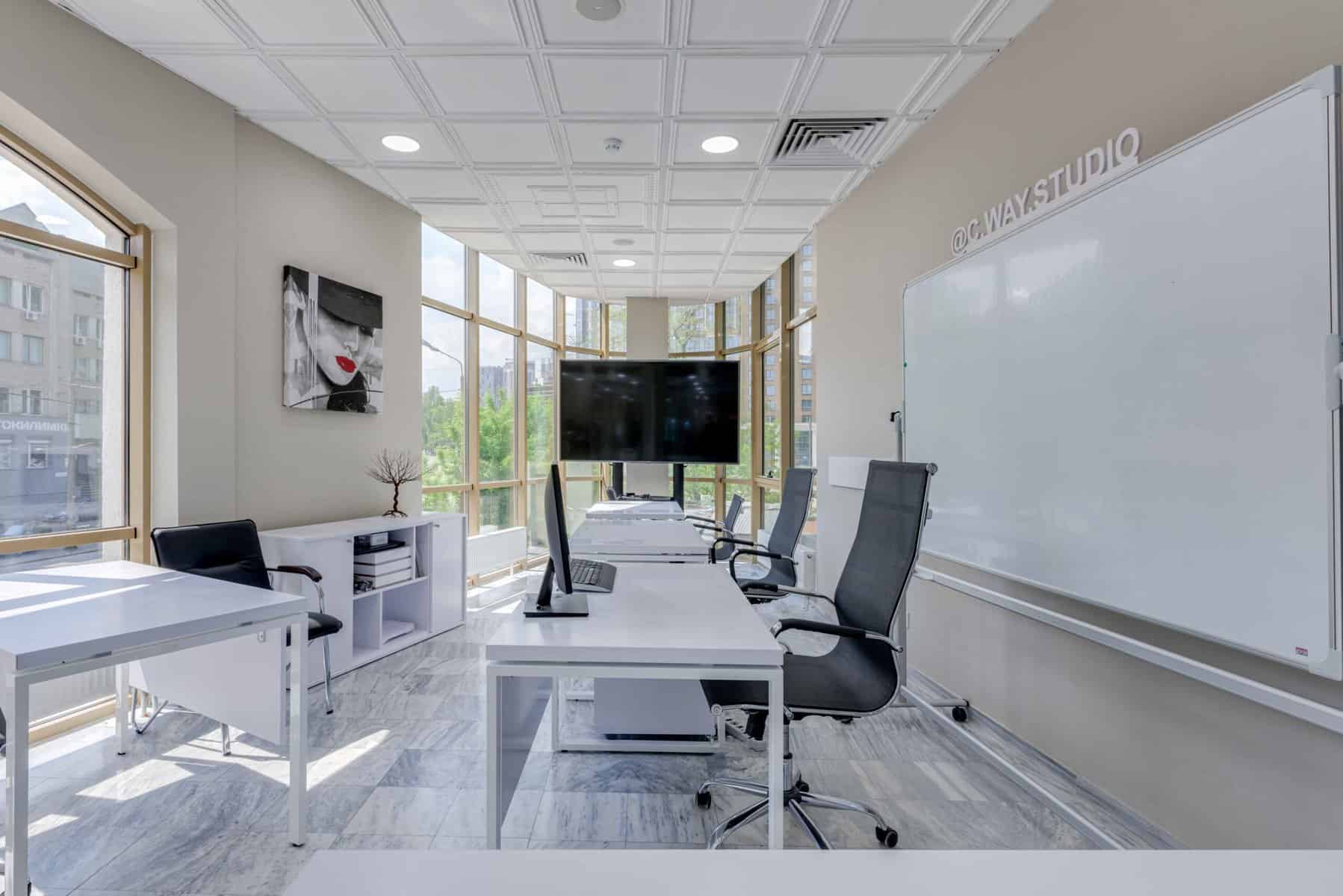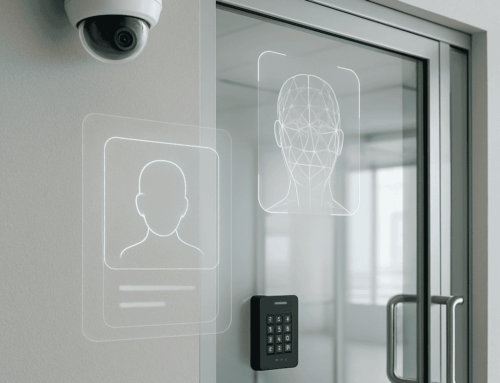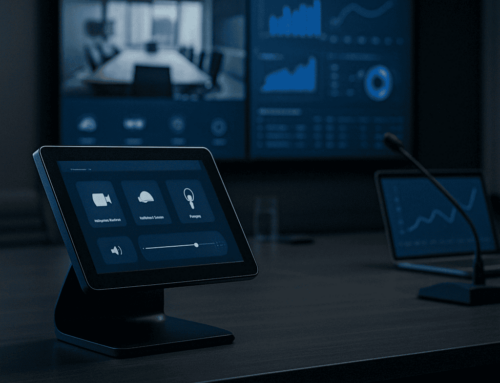The Ultimate Meeting Room Equipment Checklist

No one’s a fan of meetings, but do you know what makes them worse? Badly set meeting rooms.
Everything from insufficient chairs to bad speaker qualities can put meeting participants on edge. If you’ve been assigned the responsibility of setting up your company’s main meeting room or just temporarily transforming a space for a meeting, make it easier on the participants and do a thorough job. We’re here to help.
Stay with us as we take you through the specifics of a well-set-up meeting room.
The Basic Meeting Room Equipment List
Before progressing onto specifics of the meeting itself, let’s go through the list of equipment mainly required in meeting rooms. We’ll keep referring to this list ahead as well.
Furniture
Yes, we know you’re aware that you need chairs and tables, but we’ll remind you anyway. No one likes to stand in lengthy meetings, and no one wants to sit stuffed between two coworkers either. Count the number of participants and keep extra chairs or stools just to be sure. Make sure the chairs are spaced appropriately, Covid cases haven’t ended yet, and breathing should be easy anyway. Arrange for broader tables or a large conference table if laptops are involved. Include chair cushions if the meeting is going to be lengthy.
Infrastructure
We’re using this to refer to power supply, WiFi, sockets, adapters, and cables. All sorts of meetings can need WiFi, so make sure you arrange for cables and wireless routers, especially if you’re aiming to set up one room that can cater to various meetings. Outlets that can accommodate multiple kinds of plugs are necessary. Keep a few electrical extension boards at hand. Make sure there is some form of a socket in easy reach: you do not want participants to cross half of the room to plug their laptops in.
Audiovisual (AV) Solutions
A well-set-up AV system is crucial in today’s offices. Put speakers strategically and ensure you raise the demand for quality ones – you do not want participants to strain their ears when listening to investors from another country. Just setting up the equipment isn’t enough: make sure you check the audio and visuals for clear output. The text should be legible, and the sound should be audible to the farthest end of the room.
If your office frequently arranges remote video conferences, keep a few microphones nearby. If there are separate cameras to cater to the purpose, adjust their angle and ensure all parts of the room are clearly visible. The audio and video quality should not hinder a meeting by any means. Make sure your multimedia’ or monitor’s remote control has working batteries, and keep an extra pair at hand.
Office Supplies
It’s highly likely for the participants to forget writing equipment, and not noting things down can ultimately affect the outcome of a meeting. Take responsibility and keep a bunch of papers and pens in the meeting room. You can put paper, a stack of post-its, and a pen in front of every seat before a meeting. Paperweights can be valuable as well, especially if your room has fans instead of ACs. Whiteboard markers or blackboard chalks, dusters, and ink [if necessary] are essentials too.
Shared Writing Surface
A shared writing surface can prove invaluable in small and large meetings alike. It enables participants to share and explain ideas instantly in a session. At the very least, you need to have a whiteboard or chalkboard at hand. An interactive touch screen solution can work wonderfully here as well.
Refreshments
Equip the room with necessary facilities to provide refreshment if the need ever arises. A coffee machine, an electric kettle, a cold water dispenser, and the like thereof will prove helpful, especially in long meetings.
COVID Considerations
The pandemic’s traces are still seen all across the globe, so it’s vital to ascertain that your conference space complies with the necessary guidelines. Arrange it spaciously ad use signage to communicate that the meeting room is to be aired out after every meeting and put COVID prevention guidelines. Store disposable masks in the meeting room and arrange for sanitizers to be accessible at every table. A sanitizer dispenser can be useful; purchasing small disposable bottles for all participants will harm the budget and the planet both.
The Meeting’s Specifics: Rooms, Goal, and Attendees
Different types of meetings have varying requirements, so there is no one-size-fits-all approach to setup. Now that we’ve compiled a basic meeting room equipment list, it’s time to discuss meeting-related specifics:
Before progressing to specifics of the equipment involved, identify the aim and consider the meeting’s participants.
If you’re setting a meeting up for one team regarding, say, a project’s updates, you’ll likely not need a video conferencing solution and sophisticated audio sharing tech. Instead, a whiteboard and markers freshly filled with ink will suffice. Your AV solution will also prove helpful in this regard – individuals may prefer sharing ideas through software, and the visibility of updates will be better through a projector. You can arrange your equipment in a small room.
On the other hand, if you’re arranging a meeting for your company’s new potential investors, post-it notes may not be the best choice for information sharing. In such a case, set video conference equipment, test all your gadgets, and ensure that your electronic infrastructure is sound. Arranging everything in a well-lit, air-conditioned, and quiet room with lousy lighting and noise from a ceiling fan, etc., can affect the quality of meeting for remote attendees and digital presenters.
About i.e.Smart Systems
i.e.Smart Systems is a Houston, TX based technology integration partner that specializes in design and installation of audio/visual technology and structured cabling. For more than three decades, our team of in-house experts has partnered with business owners, architectural firms, general contractors, construction managers, real estate developers, and designers in the Houston market, to deliver reliable, scalable solutions that align with their unique goals.




